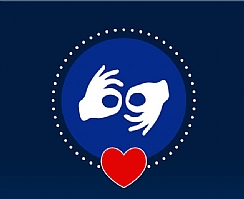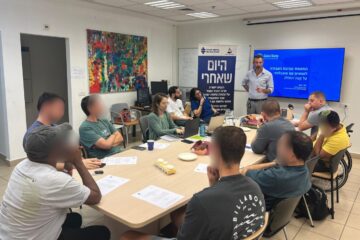Covid-19 has introduced many changes to our lives, some were not for the best – social distancing is difficult, the masks make communication more difficultand more. But the introduction of webinars was actually a good change – people can hear lectures on a variety of issues, expand their horizons and acquire knowledge – all in their pajamas! What could go wrong?

For the people with hearing disabilities , webinar participation is not that simple.
Who are we talking about? As of 2019, 13% of the individuals aged 20+ suffer from a certain hearing impairment, 2.5% with a severe impairment and 3% using a hearing aid. The percentage is much higher among individuals aged 75+ – 47% suffer from a certain hearing impairment, 13% have a severe impairment and 15% use hearing aids.
So how can matters be simplified for people with hearing disabilities , enabling them to participate in and enjoy webinars?
- Transcription – Transcription does not entail a summary of the webinar, but actually typing every word that is said. Transcription enables people with a hearing disabilities (or anyone who loses focus) to follow the content without relying solely on hearing.
- Single speaker – When several people talk at the same time, it is difficult to hear them and difficult to focus on the speaker’s window (in order to read lips). If possible, questions should be submitted through a chat, where the speaker reads and answers them.
- Microphone muting – Background noise makes it difficult for people with hearing disabilities to understand the speaker. It is important that everyone but the speaker have their microphones on mute for the duration of the lecture.
- Presentation – When showing a presentation, the speaker’s window is reduced. It is important to consider whether the presentation is truly necessary and, if not, to set it aside in order to better enable lip reading.
- Translation to Israeli Sign Language – Not all hearing impaired individuals speak Israeli Sign Language, but for those who do – usually deaf, but not only – this is a good method for ensuring accessibility (different from transcription). Enable the participants to request translation to Israeli Sign Language in advance by advertising the option and defining a deadline for requesting translation.
- Chat – Enables the participant to participate and comment in writing.
- Breaks – When conducting a long webinar, provide breaks. They will be greatly appreciated by many participants.
So, as you prepare to produce a webinar:
- Make sure that it is transcribed (and coordinate logistics in advance with a transcriber).
- Ask whether someone needs translation to sign language and ensure participation of a sign language translator.
- Instruct the speakers to set up in front of the screen, in a well-lit area with no glare, to look directly at the camera to benefit lip readers and to speak clearly and not too fast.
- When starting the webinar, present the available accessibility arrangements, such as subtitles and sign language, be sure to mute all microphones and speak separately, one at a time.
And don’t forget the speakers – they too need accessibility aids sometimes!






